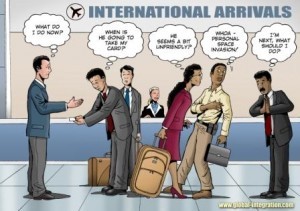 We do a lot of work in Asia. In fact, our parent company is headquartered in Europe and a majority of our customers have Japanese founders.
We do a lot of work in Asia. In fact, our parent company is headquartered in Europe and a majority of our customers have Japanese founders.
Because of that, we've had to learn how to do business in cultures that aren't second nature for us.
This is a common challenge faced by organizations in today’s global economy. Gone are the days of working exclusively within our own culture.
Now we must learn and adapt ourselves to various cultural norms, standards, behaviors, and beliefs, even if they conflict with the very core values and beliefs instilled in us since birth.
Learning to Work Across Cultures
The ability to adapt a global mind-set comes in the form of a skill called “cultural code-switching.”
Andrew Molinsky writes about applying this skill in business in “Code Switching Between Cultures.”
He defines code-switching as:
The ability to modify behaviors in specific situations to accommodate varying cultural norms. Code-switching requires far more than the right mind-set, information, and motivation. It requires a capacity to manage the psychological challenges that arise when someone tries to translate cultural knowledge into action.
He says, in order to successfully code-switch, you should follow these three steps:
- Diagnose and acknowledge the challenges you face.
- Adapt your behavior to reduce your distress (or potential distress).
- Appreciate the value of code-switching and view your code-switching from the perspective of the other culture(s), rather than your own.
It is very likely, at some point in your career, you will have the opportunity (if you haven’t already) to work with someone in another country. If you are not properly armed with the skill set to adapt cross-culturally, it can be a very frustrating experience for all parties involved.
The next time you or a colleague need to reach out or work with someone in another country do a little bit of background research on their business practices and customs. You will be surprised to learn how many different ways there are to conduct business around the world.
How do you manage different cultures in business?
